
All categories
Featured selections
Trade Assurance
Buyer Central
Help Center
Get the app
Become a supplier

(610 products available)
























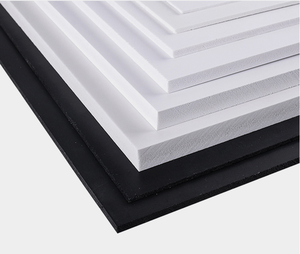
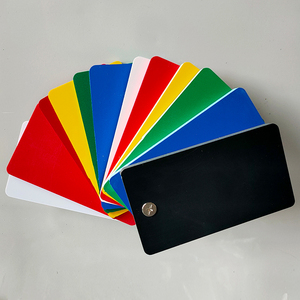




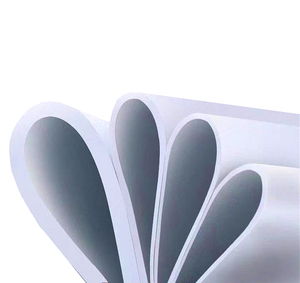


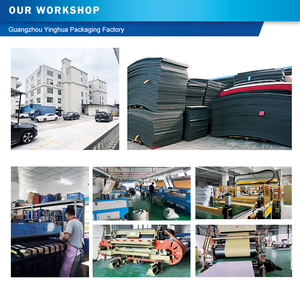


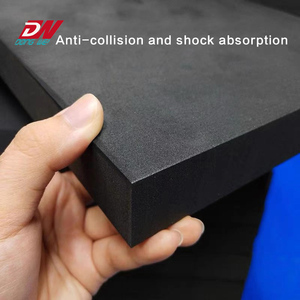





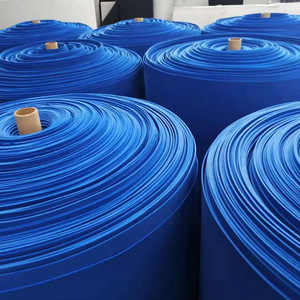

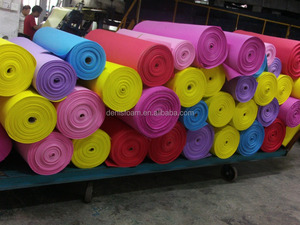
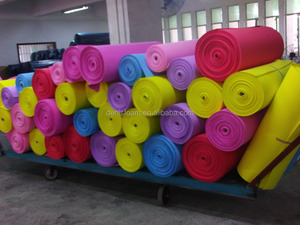
Foam material for costumes comes in diverse types, each suited for specified applications in costume design and creation. These foams are popular as they are lightweight, adaptable, and relatively easy to manufacture.
High-density foam is robust and even holds its shape over time, making it ideal for rigid structures, such as armor or large props. It can come in tough layers for better durability. In cosplay or theatrical costumes, where parts need to carry on functional applications and shape, high foam density is amazing.
Among the popularly used foams in costume creation is EVA foam. Because of its flexibility, water resistance, and toughness, EVA is conventionally utilized to make mats, sporting goods, and safety gear. In costume fabrication, it is invaluable such for spacers, helmets, armor, and costume accessories. Its nature, allowing reforming, permitting developers to craft fancy elements such as boots and weaponry, grace under pressure when shape is needed for the fight. Its glueing integration and safe coating with paints or resins further are advantageous for the texture quality and durability of the costumes.
Polyurethane foam is a famous material because of the wide range of its application. Rigid and flexible polyurethane foams have been developed. High-grade flexible polyurethane foam is used for making lighter costumes that need mobility, such as animal suits and superhero suits. The stiff sections of the lower density polyurethane foams are used for props and accents. The material also affirms its state when subjected to short deforming; this characteristic is splendid to enhance comfortability when used in cushions.
Peanut foam, also called "egg crate" foam, has a unique texture that can be easily recognized by opposing dome-shaped arrays which are supported and streamlined. This structure allows excellent airflow, thus preferred for padded inserts and cushioning. Used occasionally in costumes to provide some volume and support for elements such as wigs or soft headpieces, peanut foam holds light weight and relatively minimal rigidity in giving grace under pressure.
Again, like open-cell foam, closed-cell foam is non-porous and dense in structure. This feature provides a buoyancy ability and significant portion water resistant. Thus, it fits adventure and conventionally used in making costumes such as body armors or aquatic life. Its resistance to absorption of water makes it particularly usable when the fabricated costume will be exposed to moisture or environmental humidity, including weather conditions.
The function of the foam in costumes is more than a gimmick. The aspect of design is much more essential. In regard to the costumes, function alone cannot be separated from aesthetics. The best costume foams are those that provide structural support and enhance the visual appeal enhanced by structural support.
Layering foams of different densities or thicknesses improves costume designs while enhancing looks for the modernistic designs. These layers provide structure and shape and, in the process, enhance the texture and visual depth to the costume. For instance, the spandex foam layer comes under EVA foam in a costumer's dress, which portrays the muscular appearance and adds realism.
Conventionally, fine foams are integrated into costume elements intending to create a three-dimensional shape or design. Sculpted foam horns, shoulders, or tails, for instance, give a costume an overall radical outlook, negating the simple flat fabric. Adding details such as rhinestones or other ornamentation to achieve intriguing designs is also possible, such as painting textures onto the foams.
One of the advantages of costume foam is that it can be easily manipulated by heat. Foam can be reshaped to achieve the required curves, spikes, or bends. Cosplay developers often use heat guns or ovens to bend foam into costumes that accurately follow the required shapes and structures, hence improvements in functionality and looks.
The texture and surface quality of costume foam have a significant effect on how real or otherwise a costume appears. Paints, sealants, and textured sponges provide surface treatments that foam pieces acquire, making them look similar to genuine materials such as leather, metal, or scale. This factor is critical when crafting cosplays since accuracy usually comes close to a particular costume in performance.
Understanding the features of foam material for costumes is also vital in regards to upkeep and usability to acquire the best results.
The cleaning and storage of foam materials are important to enhance the longevity of costumes. It is advisable to wipe off the surface with wet cloth and mild soap. Submerging foam material in water should be avoided because water will eventually destroy it. When not in use, costumes should be stored in cool and dry closets away from direct exposure to sunlight so that fading and deterioration of foam materials will be avoided.
In cases where the costume foam has been punctured or worn out, most of the repairs can be addressed easily by using foam scraps and glue. Light sealants, flexible adhesives, or patches of the same material can be stitched on top of foam damage to give it another lease of life.
Foam sheets for costumes plays a critical role in the varied scope of creating costumes, from simple DIY projects to professional-grade performances. The materials find purposes that vary not only in requirements but also in complexities and scale.
Theater practitioners use foam greatly in costume design because of the long hours the performers are expected to be in their costumes; this makes usability a core factor. EVA and closed-cell foams are easily structured into props or costumes with a firm structure, such as wings or animal body shapes. These foams are heat sculpted or combined to create light but firm costumes that allow performers to act without being weighed down. The foams are painted and sealed to withstand backstage climate and remain in good condition throughout the performance period.
The Halloween costumes practiced in do-it-yourself events come endowed with versatility foam uniquely provides. The intrigue and creativity involved in Halloween costume foam creation are evident, particularly with EVA and crafting foams. These materials can be easily transformed into monster-shaped costumes, hats, and even accessories without the need for wrestling with heavy materials. The value of the foam in this instance is disposable, as it can be easily created and destroyed annually to cater to different themes.
Cosplay depends highly on foam materials because of the foam's systemic adherence to creating accurate representations of characters. EVA foam is a staple in this practice due to its potential to be reformed and painted into desirable shapes, such as weaponry, armor, or mechanical parts, as seen in character designs. Usually, cosplayers will add layers of foam to achieve the muscular definition or the mechanical parts of the costumes, making the clothes obtainable through innovative and utilitarian means. Sealers and special foam paints enhance the foam's integration into the designs and prevents the foam from becoming flaked during con events.
Usually, foam is employed in costumes of performers in theme parks such as mascots and character suits. The aim is to create some stunning visuals while ensuring that the performer remains totally comfortable for long hours. Closed-cell and flexible foams give a reasonable degree of temperature regulation, cushioning, and light weight, further making it ideal in maintaining safety measures, performance, and durability.
A1: EVA and polyethylene foams are mostly preferred due to their ease of adaptation and resilience.
A2: Foam costumes are lightweight and provide comfort; hence, they are ideal for an extended period.
A3: Minor soap and water with a clean cloth is all it takes to clean costume foam.
A4: EVA foam sheets can be glued together to repair punctured foam sheets.
A5: Storing foam in a cool environment will reduce degradation due to exposure to heat.